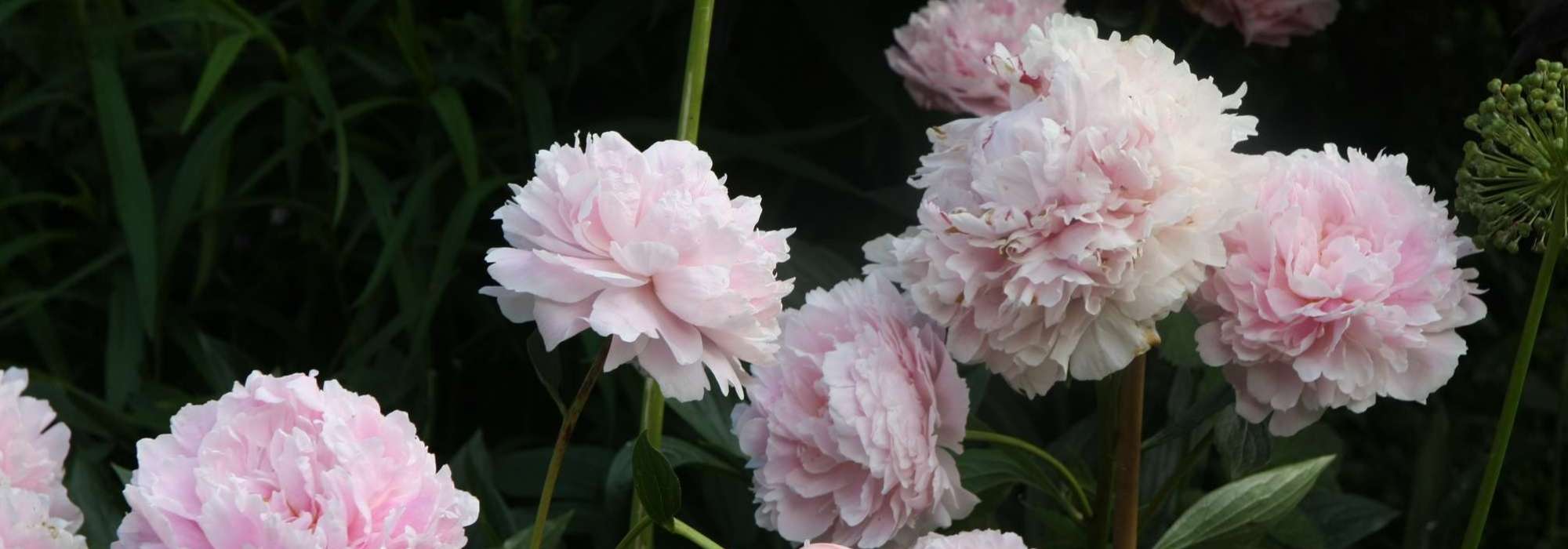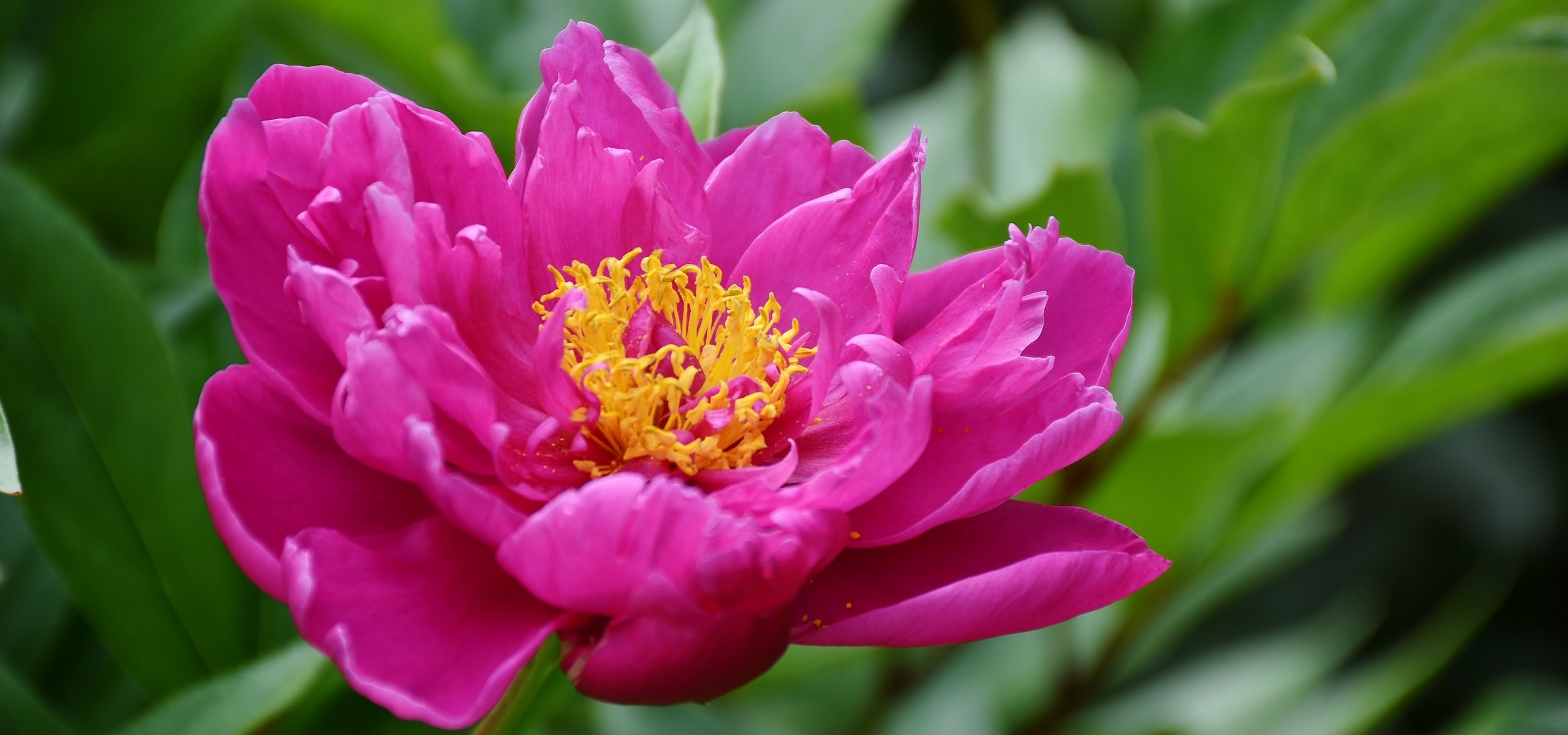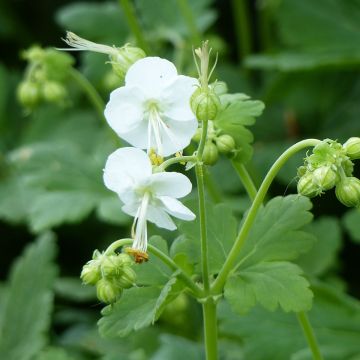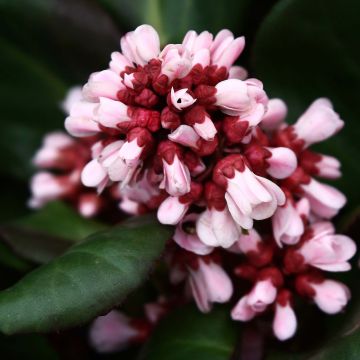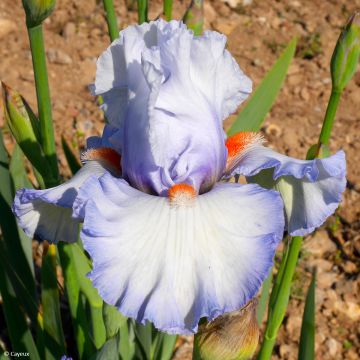

Paeonia x lactiflora Madrid - Chinese Peony
Paeonia x lactiflora Madrid - Chinese Peony
Paeonia x lactiflora Madrid
Chinese peony, Common peony, Garden peony, Herbaceous Peony
Special offer!
Receive a €20 voucher for any order over €90 (excluding delivery costs, credit notes, and plastic-free options)!
1- Add your favorite plants to your cart.
2- Once you have reached €90, confirm your order (you can even choose the delivery date!).
3- As soon as your order is shipped, you will receive an email containing your voucher code, valid for 3 months (90 days).
Your voucher is unique and can only be used once, for any order with a minimum value of €20, excluding delivery costs.
Can be combined with other current offers, non-divisible and non-refundable.
Why not try an alternative variety in stock?
View all →This plant carries a 12 months recovery warranty
More information
We guarantee the quality of our plants for a full growing cycle, and will replace at our expense any plant that fails to recover under normal climatic and planting conditions.
Would this plant suit my garden?
Set up your Plantfit profile →
Description
The Peony 'Madrid' is a compact variety from the Patio Peony collection featuring large semi-double to double white flowers with a light fragrance. It flowers late, between late May and early June, on short, sturdy stems. Very stocky, this variety is perfectly suited to container growing or for ornating a border. Easy to care for, it adapts well to small gardens and urban patios. It also makes beautiful cut flowers.
The Peonia Patio Peony 'Madrid' is a herbaceous perennial belonging to the Paeoniaceae family. The Patio Peony peonies are hybrids with a naturally compact habit, particularly suited to container growing. The plants have a reduced growth, less than 80 cm, and robust stems that support the flowers without needing to stake. They nevertheless retain the typical ornamental characteristics of classic peonies: large, very decorative flowers, and excellent hardiness. These peonies are accessible to a wide audience, especially in urban settings.
With a bushy and rounded habit, the Patio 'Madrid' cultivar forms a clump of 50-60 cm in height with a spread of 30 to 50 cm. Mature size is reached at around 5 years of age. The late flowering occurs from May to July depending on the climate. It takes the form of large white, semi-double to double, more or less fragrant flowers of Japanese style (anemone-shaped). A whorl of petals 15 cm in diameter surrounds a large centre of creamy yellow petaloids. Borne on sturdy stems, these flowers are ideal for cutting. The foliage is formed of dark green, glossy and finely divided, decorative leaves even outside the flowering period. In autumn, the foliage turns yellow before disappearing for winter dormancy. The peony's root system consists of fleshy, tuberous roots that dislike being disturbed. The aerial growth emerges from the soil in early spring.
With its contained growth, the peony 'Madrid' naturally finds its place in intimate settings. In a pot on a balcony or at the edge of a small bed, it creates a soft focal point around which elegant harmonies can be arranged. It pairs wonderfully with late double tulips like ‘Mount Tacoma’; its white flowers will extend the delicacy of its colouring. To play with contrasts of form and texture, choose the large, crumpled corollas of the Oriental poppy ‘Royal Wedding’. And to extend the bed's flowering into summer, accompany it with small phlox ‘Fashionably Early Crystal’ for example.
Flowering
Foliage
Plant habit
Botanical data
Paeonia
x lactiflora
Madrid
Paeoniaceae
Chinese peony, Common peony, Garden peony, Herbaceous Peony
Cultivar or hybrid
Planting and care
Like all peonies, the Patio Peony 'Madrid' dislikes being moved, so careful consideration must be given to its planting location. It can be cultivated in pots or in open ground. The best time to plant them is in spring or autumn. Plant the stumps in a sunny or bright position in deep, well-loosened, and most importantly, properly drained soil. They require space and dislike competition from other species. Prepare a hole measuring 50 x 50 x 50 cm, add a thin layer of sand or gravel at the bottom to ensure good drainage for the roots, mix organic fertiliser into your soil, partially backfill, position your plants and cover with 6 cm of soil above the eyes. After planting, firm the soil in and water thoroughly.
Planting period
Intended location
Care
Planting & care advice
This item has not been reviewed yet - be the first to leave a review about it.
Similar products
Haven't found what you were looking for?
Hardiness is the lowest winter temperature a plant can endure without suffering serious damage or even dying. However, hardiness is affected by location (a sheltered area, such as a patio), protection (winter cover) and soil type (hardiness is improved by well-drained soil).

Photo Sharing Terms & Conditions
In order to encourage gardeners to interact and share their experiences, Promesse de fleurs offers various media enabling content to be uploaded onto its Site - in particular via the ‘Photo sharing’ module.
The User agrees to refrain from:
- Posting any content that is illegal, prejudicial, insulting, racist, inciteful to hatred, revisionist, contrary to public decency, that infringes on privacy or on the privacy rights of third parties, in particular the publicity rights of persons and goods, intellectual property rights, or the right to privacy.
- Submitting content on behalf of a third party;
- Impersonate the identity of a third party and/or publish any personal information about a third party;
In general, the User undertakes to refrain from any unethical behaviour.
All Content (in particular text, comments, files, images, photos, videos, creative works, etc.), which may be subject to property or intellectual property rights, image or other private rights, shall remain the property of the User, subject to the limited rights granted by the terms of the licence granted by Promesse de fleurs as stated below. Users are at liberty to publish or not to publish such Content on the Site, notably via the ‘Photo Sharing’ facility, and accept that this Content shall be made public and freely accessible, notably on the Internet.
Users further acknowledge, undertake to have ,and guarantee that they hold all necessary rights and permissions to publish such material on the Site, in particular with regard to the legislation in force pertaining to any privacy, property, intellectual property, image, or contractual rights, or rights of any other nature. By publishing such Content on the Site, Users acknowledge accepting full liability as publishers of the Content within the meaning of the law, and grant Promesse de fleurs, free of charge, an inclusive, worldwide licence for the said Content for the entire duration of its publication, including all reproduction, representation, up/downloading, displaying, performing, transmission, and storage rights.
Users also grant permission for their name to be linked to the Content and accept that this link may not always be made available.
By engaging in posting material, Users consent to their Content becoming automatically accessible on the Internet, in particular on other sites and/or blogs and/or web pages of the Promesse de fleurs site, including in particular social pages and the Promesse de fleurs catalogue.
Users may secure the removal of entrusted content free of charge by issuing a simple request via our contact form.
The flowering period indicated on our website applies to countries and regions located in USDA zone 8 (France, the United Kingdom, Ireland, the Netherlands, etc.)
It will vary according to where you live:
- In zones 9 to 10 (Italy, Spain, Greece, etc.), flowering will occur about 2 to 4 weeks earlier.
- In zones 6 to 7 (Germany, Poland, Slovenia, and lower mountainous regions), flowering will be delayed by 2 to 3 weeks.
- In zone 5 (Central Europe, Scandinavia), blooming will be delayed by 3 to 5 weeks.
In temperate climates, pruning of spring-flowering shrubs (forsythia, spireas, etc.) should be done just after flowering.
Pruning of summer-flowering shrubs (Indian Lilac, Perovskia, etc.) can be done in winter or spring.
In cold regions as well as with frost-sensitive plants, avoid pruning too early when severe frosts may still occur.
The planting period indicated on our website applies to countries and regions located in USDA zone 8 (France, United Kingdom, Ireland, Netherlands).
It will vary according to where you live:
- In Mediterranean zones (Marseille, Madrid, Milan, etc.), autumn and winter are the best planting periods.
- In continental zones (Strasbourg, Munich, Vienna, etc.), delay planting by 2 to 3 weeks in spring and bring it forward by 2 to 4 weeks in autumn.
- In mountainous regions (the Alps, Pyrenees, Carpathians, etc.), it is best to plant in late spring (May-June) or late summer (August-September).
The harvesting period indicated on our website applies to countries and regions in USDA zone 8 (France, England, Ireland, the Netherlands).
In colder areas (Scandinavia, Poland, Austria...) fruit and vegetable harvests are likely to be delayed by 3-4 weeks.
In warmer areas (Italy, Spain, Greece, etc.), harvesting will probably take place earlier, depending on weather conditions.
The sowing periods indicated on our website apply to countries and regions within USDA Zone 8 (France, UK, Ireland, Netherlands).
In colder areas (Scandinavia, Poland, Austria...), delay any outdoor sowing by 3-4 weeks, or sow under glass.
In warmer climes (Italy, Spain, Greece, etc.), bring outdoor sowing forward by a few weeks.








































